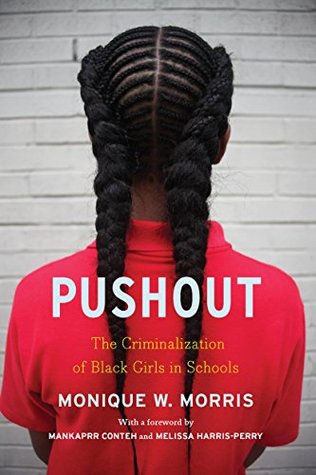More on this book
Community
Kindle Notes & Highlights
Read between
January 23 - February 15, 2020
In this context, Black femininity as a subordinated gender identity becomes constructed not just in relation to White women, but also in relation to multiple others, namely, all men, sexual outlaws (prostitutes and lesbians), unmarried women, and girls.”24
they are either “good” girls or “ghetto” girls who behave in ways that exacerbate stereotypes about Black femininity, particularly those relating to socioeconomic status, crime, and punishment.28 When Black girls do engage in acts that are deemed “ghetto”—often a euphemism for actions that deviate from social norms tied to a narrow, White middle-class definition of femininity—they are frequently labeled as nonconforming and thereby subjected to criminalizing responses.29
So what’s the real story? Are Black girls performing at an unprecedented high level, or are they failing and being marginalized? The answer is: both. And the reason for these competing narratives is complex.
Black girls are treated as if they are supposed to “know better,” or at least “act like” they know.
They might begin to ponder what would happen if parents and schools worked together to construct a set of norms that wouldn’t confuse or mislead girls, but would instead elevate everyone’s consciousness.
Stacy took pride in her fighting ability. A competitive spirit, she enjoyed a challenge, but she—like so many other girls—was conflating her fear of being perceived as weak or a “punk” with her identity as a “problem child.” That any child would refer to him- or herself as a problem is heartbreaking. Our most basic hope for children should be that they see themselves as sacred and loved, not problematic. She drew her “respect” from outward manifestations of prestige—looking “cute” or fighting—but she was
also responding to her fear of not being seen or highly regarded in some way. Stacy framed her behavior as a tendency to get in trouble, but I see her trigger as anything (or anyone) that might interfere with her own visibility politics. Stacy was triggered by a fear of being ignored.
While personal taste may lead many of us away from wearing leggings or dreadlocks at school, any school policy that is designed to keep girls from being “too distracting” for boys or presenting in ways that are deemed too ethnic is at minimum sexist and inappropriate.


